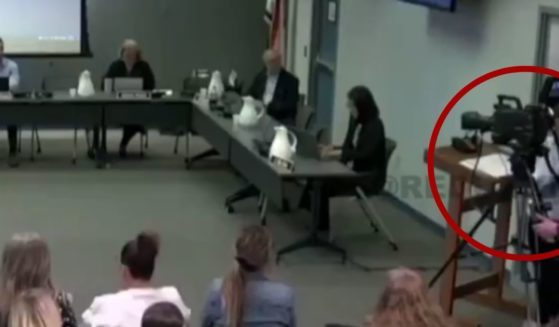Connecticut Teacher's Heartbreaking Story of Missing Kids Exposes Huge Problem in Remote Learning
Having never attended anything but a traditional public school, I find it painful to see so many of them falter.
My sadness aside, the fact remains that the American public education system was wholly unprepared for COVID-19, and there is perhaps no better example of this unpreparedness than the fiasco surrounding remote learning.
Before continuing further, it is necessary to make a distinction between remote learning and virtual education.
According to the Texas Public Policy Foundation, remote learning, in general, is “a quick mitigation strategy in the event of an extreme emergency” and an “attempt to clone a traditional classroom in an online format without making any substantive adjustments.”
Virtual education, on the other hand, is designed with the integration of the student and the internet firmly in mind. It is meant to exist in a more permanent fashion, and it incorporates strategies that are known and proven to facilitate learning.
These programs ought to be expanded, as they truly benefit some students. Parents ought to be able to choose the instructional model that best suits their child’s needs. After all, empowering American families to make the best decision for their children is what school choice is all about.
However, any strategy centered around remote learning is doomed to fail. Remote learning is a Band-Aid on a gaping wound, and while it might stop some of the bleeding, some students inevitably will be left behind in the miasma of a crumbling institution.
This is a lesson that Kristen Record, an award-winning science teacher at Bunnell High School in Stratford, Connecticut, had to learn the hard way.
In an interview with Politico, Record said that about 10 percent of her students have never come to class this school year — even after Connecticut students were given the option to return to school in person.
“I have missing kids,” she said. “Kids that are on my roster who I haven’t seen in weeks and are not going to pass my class. I wish I could go to their home and sit and talk them through whatever is going on. I wish a team of us could be doing that.”
Record is, by all accounts, is an exemplary teacher and person, and the lack of attendance cannot rightfully be blamed on her.
The state of Connecticut, conversely, appeared to have no idea what it was getting itself into when it ventured down the path of remote learning.
In July, Democratic Gov. Ned Lamont announced a $43 million spending plan that intended to use federal funds to ensure that thousands of needy students would have a laptop as well as the internet connectivity to use it, Politico reported.
Without a specific implementation plan, no amount of money can solve serious logistical concerns. Unfortunately, that is the situation Connecticut found itself in.
State officials had no map to determine where kids were connected or disconnected to their remote classes, and subsequently relied on local districts — which were already scrambling to provide the aforementioned remote classes — to fill in the gaps.
Families had their reasons to fear the sudden intrusion of cable companies. Some were not comfortable with the technology and were unnerved by strangers coming to their home telling them to use it. Others had a language barrier or were struggling economically.
These fears were reflected in Connecticut’s attendance data.
Hedy Chang, director of Attendance Works, which targets rampant absenteeism, told ABC News that chronic absence in that state “has risen from 12% in the 2019-20 school year, to 21% in the first half of the 2020-21 year. For English-learners, the rate has doubled from 17 to 35%; and for students eligible for free meals, it’s up from about 20 to 35%.”
In response, Lamont’s administration is pouring $11 million into a door-to-door initiative to encourage children to come back to school.
Record said she is unsure if there is enough manpower to ensure the initiative’s success.
“We just lack the social services resources that are necessary to truly engage with those families and those kids that are disengaged from the school community,” she said. “The school counselors, the social workers, and the school psychologists in my school district are putting in tremendous amounts of work and tremendous hours, but there’s not enough of them. That’s where I see where the plan sort of fell down.”
But Connecticut — like nearly every other state — cannot repair its shattered school systems with an initiative here or a few million dollars in funding there.
COVID did not break our school systems, it only exposed what was already broken. The administrative systems, backed by corrupt unions, lived to serve themselves rather than America’s educators and youth.
When the pandemic hit, even amid the maelstrom of rapid change, states had a choice.
They could choose to embrace the numerous tried-and-true methods of virtual education and empower districts to work with students individually to meet their educational needs, or they could choose to run around like headless chickens to reproduce whatever facade of normality they could muster.
Most states, with Florida and perhaps Georgia as exceptions, chose the latter. Districts, students and teachers like Record were left to fend for themselves, and disastrous remote learning was the result.
It didn’t have to be this way.
As the TPPF’s Emily Sass noted, “Parents want — and many children need — options when it comes to education.”
I don’t blame parents for choosing pods, charter schools, private schools and virtual education one bit. For the most part, they are providing the options that many public schools either cannot or will not support.
Truth and Accuracy
We are committed to truth and accuracy in all of our journalism. Read our editorial standards.












